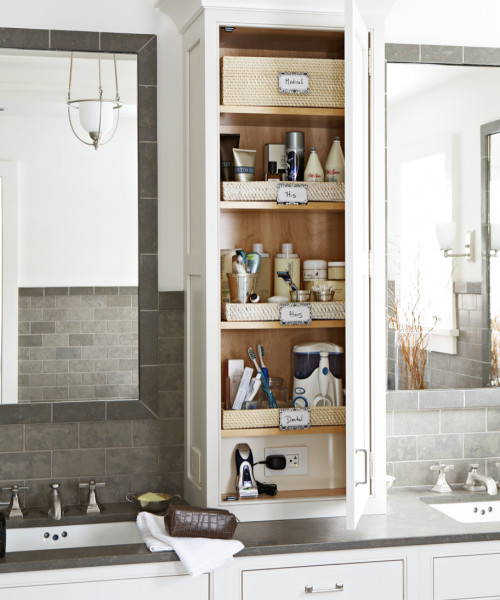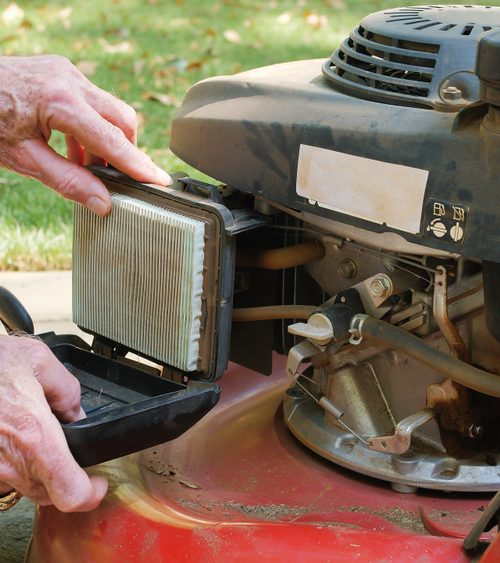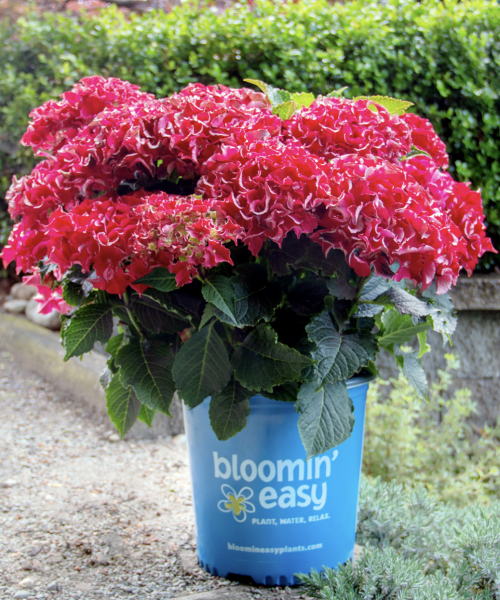By Jenny Krane | BHG.Com
Troy Warren for CNT #HomeGarden
Even though some of our favorites fall into the high-maintenance category, keeping them alive isn’t impossible.
We’ve all killed a plant (or two, or three) in our lives. It happens. Even theoretically indestructible houseplants, like snake plant, pothos, and dracaena can bite the dust if neglected too much. But what about tough-to-grow species? Believe it or not, they can be mastered! Many of the more challenging plants to keep alive are native to tropical rainforests, so they tend to struggle in the drier, dimmer conditions found in most homes. You don’t need to turn your home into a jungle to successfully grow them, but you will have to provide a bit more TLC than you might give your pothos. Here are seven popular houseplants that require a little extra work on your part, but will reward you with beautiful leaves—and even flowers on one of them.
1. Moth Orchid
Being a plant parent to moth orchids (also called Phalaenopsis) requires some patience. After blooming, these plants need time to regenerate before putting out another round of flowers. An orchid will drop its previous blooms so it can give all its energy to new flowers. With the right care, you can usually get it to rebloom two or three times a year, though the flowers might be a little smaller.
During their regeneration time, the leaves won’t look like they’re doing much and that’s okay. But if you see shriveling on the leaves or roots, you’re probably not watering it enough. To remedy this problem, submerge the the entire pot in a sink or basin full of water for about 15 minutes, then allow it to drain. Do this whenever the top inch of soil in the pot feels dry.
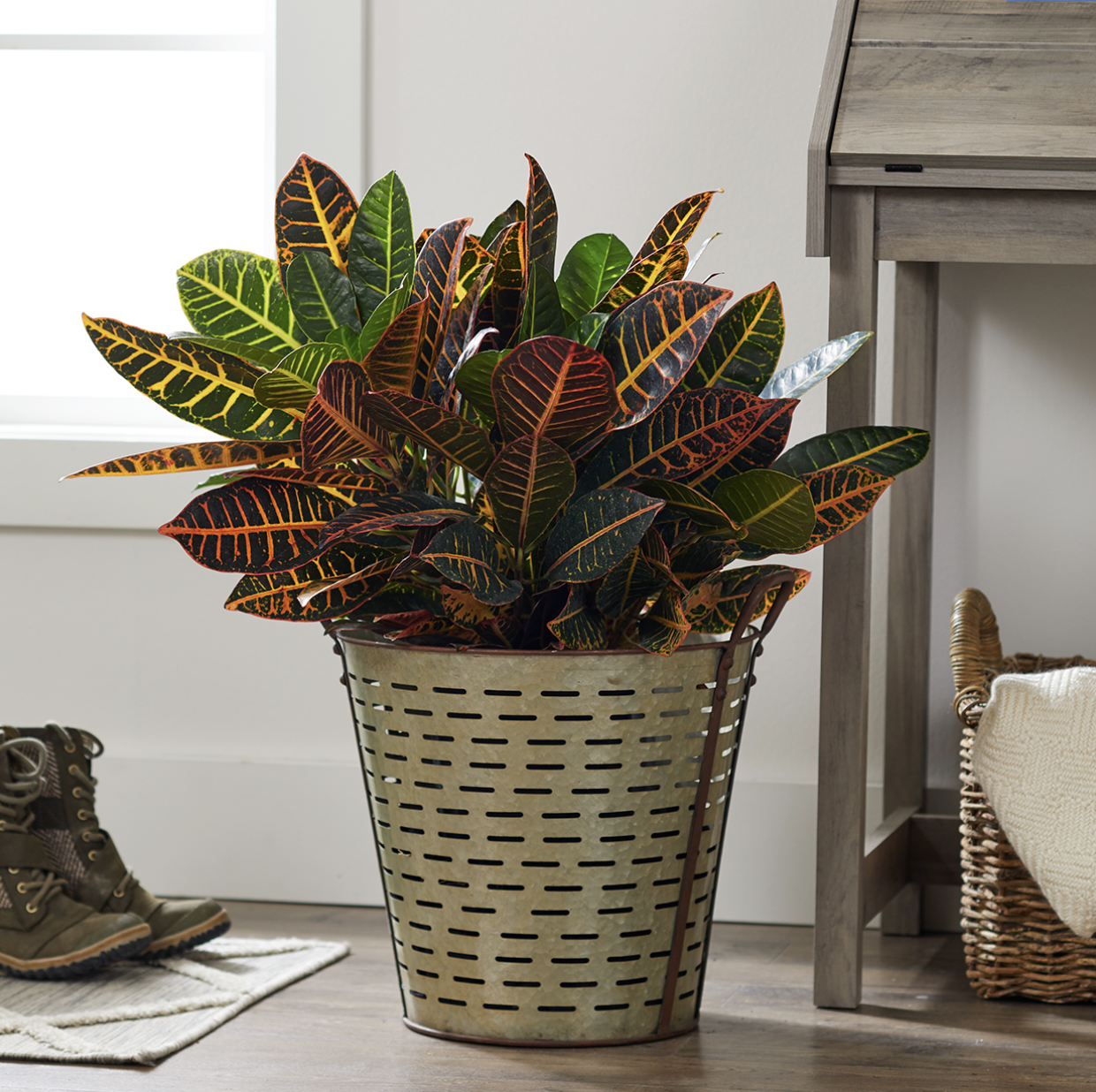
2. Croton
Thick, glossy, multi-colored leaves are what we love most about crotons. However, these tropical beauties can be somewhat fussy about their treatment. For starters, they don’t like sudden changes when you move them from one spot to another. If you notice some of the leaves turning completely yellow after placing your croton in a different spot in your home, think of it as the plant version of a temper tantrum. It will acclimate to its new spot and grow some new leaves in a couple of weeks.
Crotons also prefer regular watering, so if leaves start dropping off, it’s most likely because things got too dry for its liking. Increase the amount of water you give your plant, but be careful not to overwater it either, or keep it in a pot without a drainage hole. Sitting in water drowns the roots.
If you start to notice a white, slightly crusty substance at the top of the soil, it’s a sign that it’s time to repot your plant. Those crusty spots are salt build-up from watering and fertilizing over time. Repotting your plant in fresh soil mix should fix the issue.
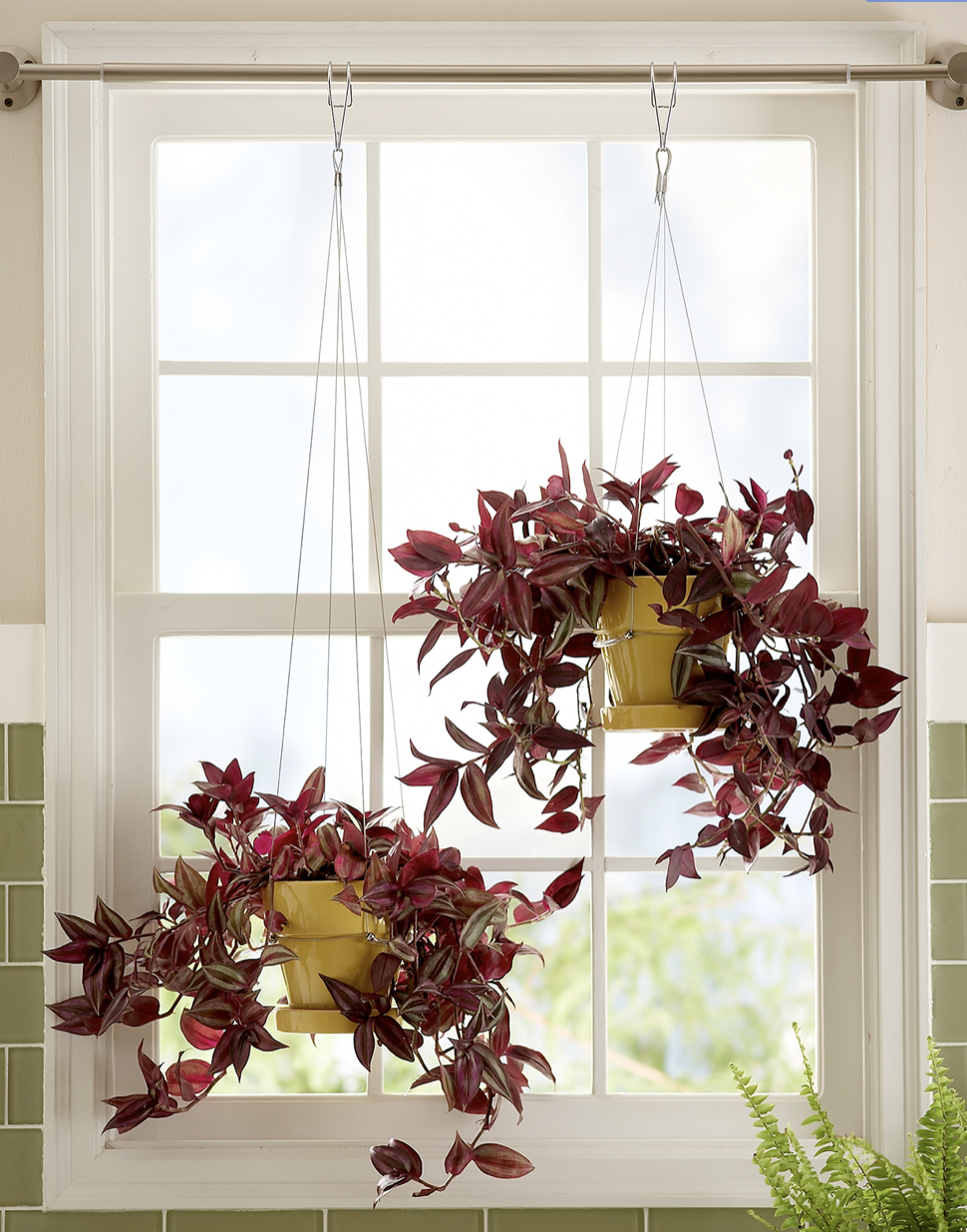
3. Tradescantia
Some varieties of tradescantia have variegated green and purple leaves that can turn especially bright outdoors, and others have leaves that are velvety to the touch. These trailing plants are perfect for displaying in macramé plant hangers, but you can also just keep them in regular containers. Tradescantias do best with plenty of water, so make sure the soil is moist at all times. If the plant’s pot feels light when you pick it up, that’s usually a good indicator that it needs a drink. One easy way to water tradescantia is to set it in your sink and tub, and fill the basin with a few inches of water. Then, the plant can soak it up from the bottom, which can be easier than trying to pour water on it from the top.
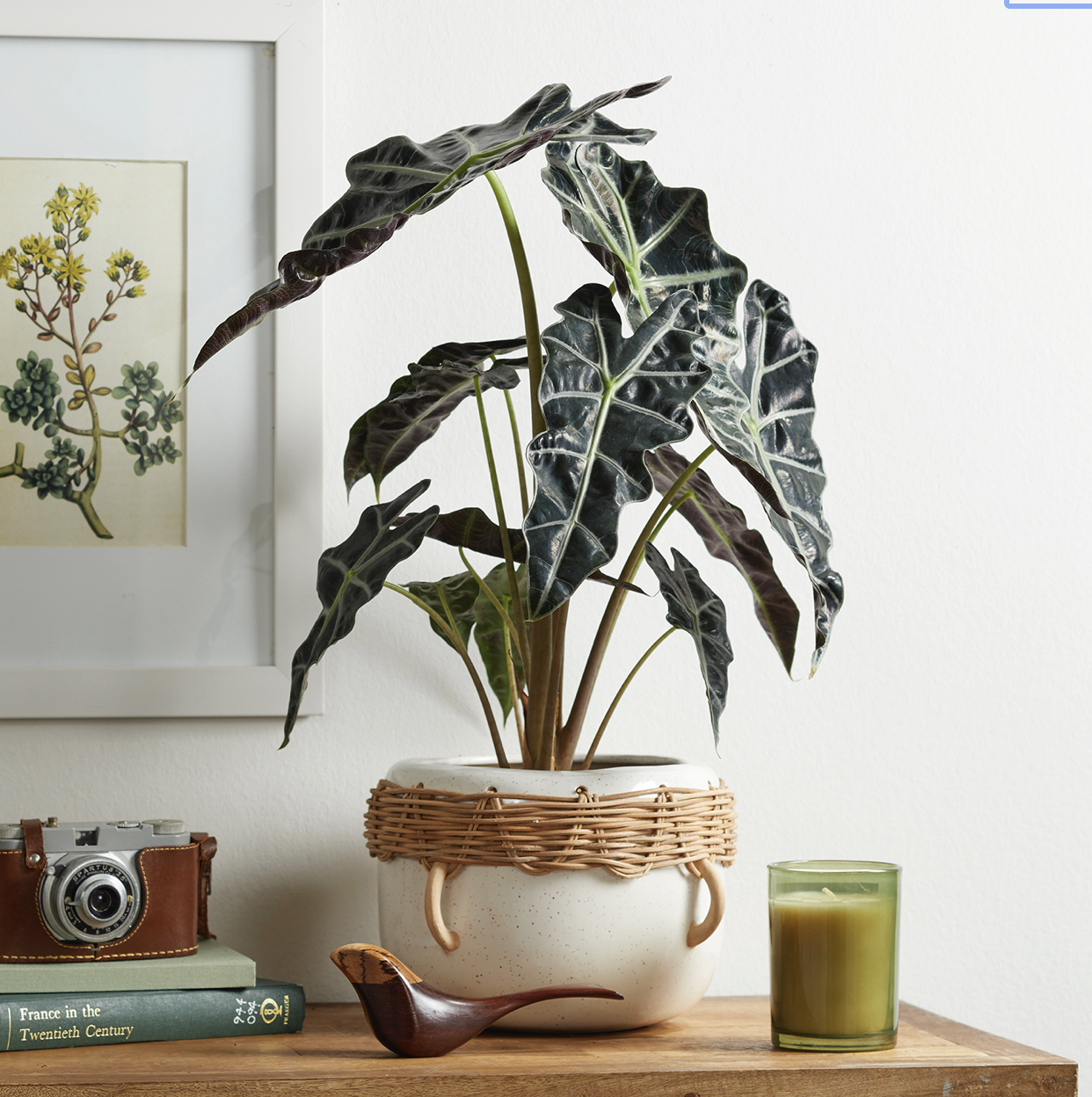
4. Elephant’s Ear
This tropical plant is known for its exotic-looking leaves and ability to thrive in wet areas. Elephant’s ear makes it very easy to tell when it needs a good drink of water—the stalks will quickly droop. Each stalk that holds a large leaf at the end is actually like a straw full of water. If the stalk isn’t full of water, the leaf will become too heavy for it, and can start to turn yellow. It usually will perk up soon after you water it, but make sure to keep this plant’s soil damp so it can look its best.
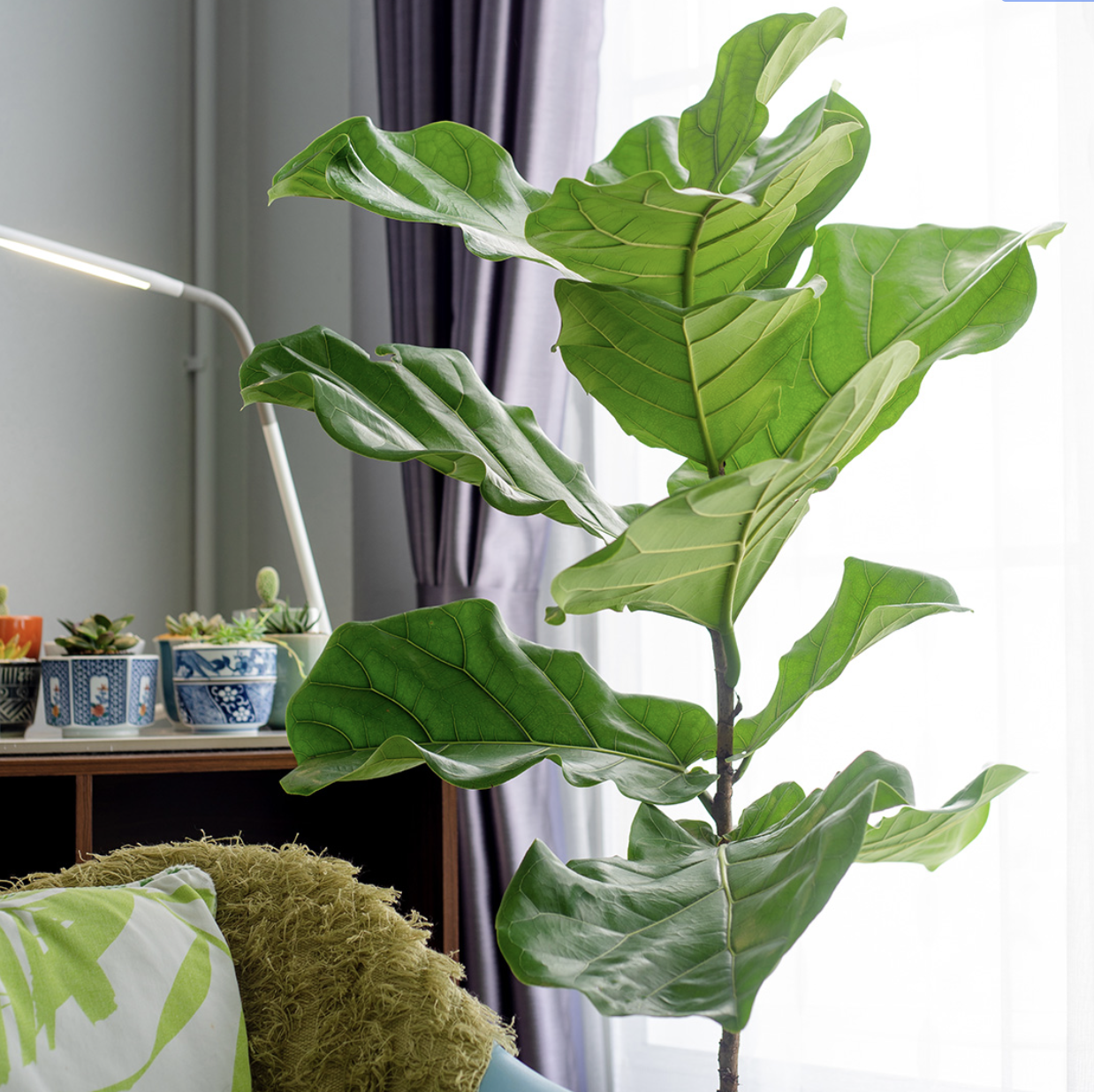
5. Fiddle-Leaf Fig Tree
One of the most popular indoor trees, the fiddle-leaf fig is a type of ficus that has large, paddle-shaped leaves. Its dramatic foliage prefers filtered, indirect light so it will do best near an east- or west-facing window (but south-facing could get too bright for it). Limit watering to once a week and don’t water if the soil still feels damp to the touch. If these finicky trees get too much water, the leaves may start yellowing or turning brown so reduce watering if you see these symptoms. However, if the leaves look droopy, go ahead and give your plant some water. Keep the humidity high around it, too.
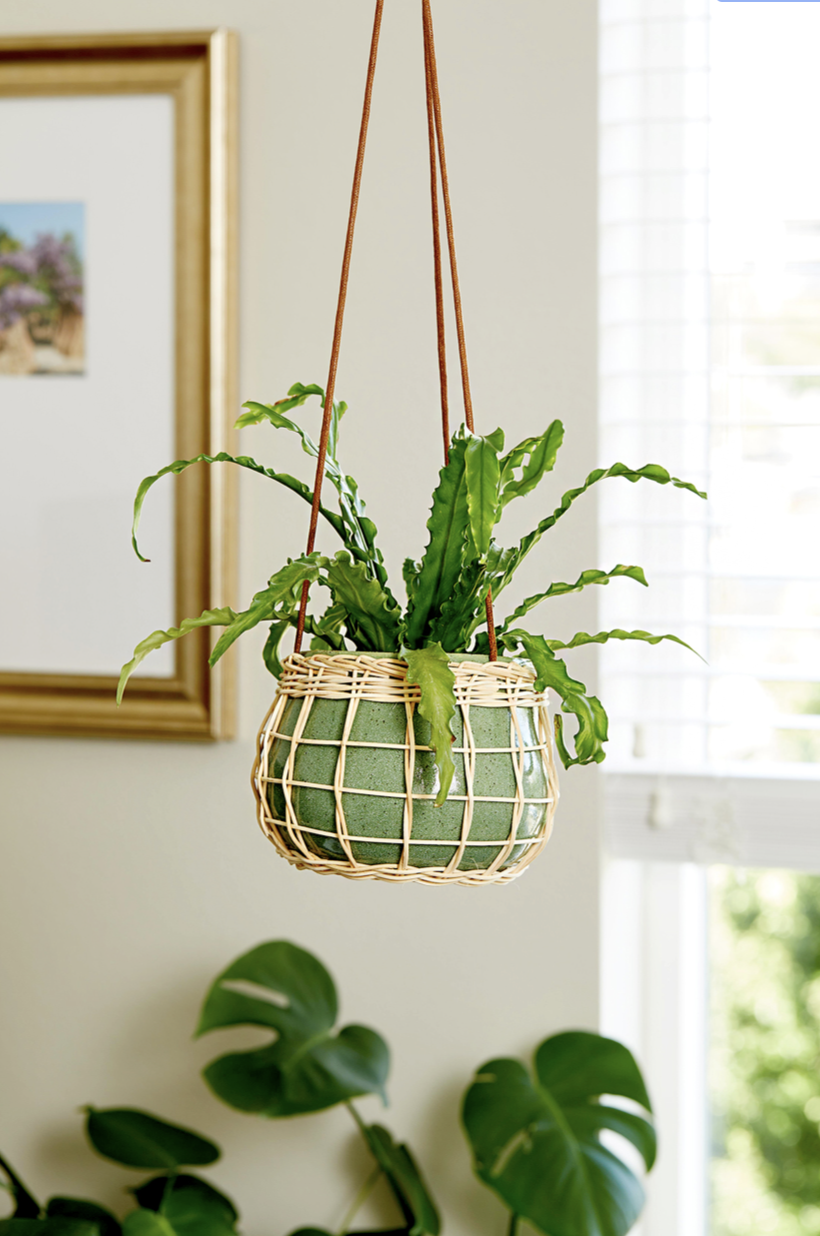
6. Bird’s Nest Fern
The bright green, glossy leaves of this fern variety have a delicate, curly edge that adds fun texture to your indoor garden. The trick to keeping bird’s nest fern thriving is plenty of moisture in the air. When this plant gets too dry, its leaves start to brown on the edges. Water it every couple of days, making sure the excess drains out the bottom of the pot, and mist the leaves daily to keep the humidity levels up. You can also try placing the pot onto a plastic dish or tray covered with a layer of pebbles. Fill the dish with water but don’t let it touch the bottom of the pot so the roots don’t get too wet. As water evaporates, it will create a humid micro-climate around the fern. Or you can group it together with other plants to help with keeping humidity higher around them.
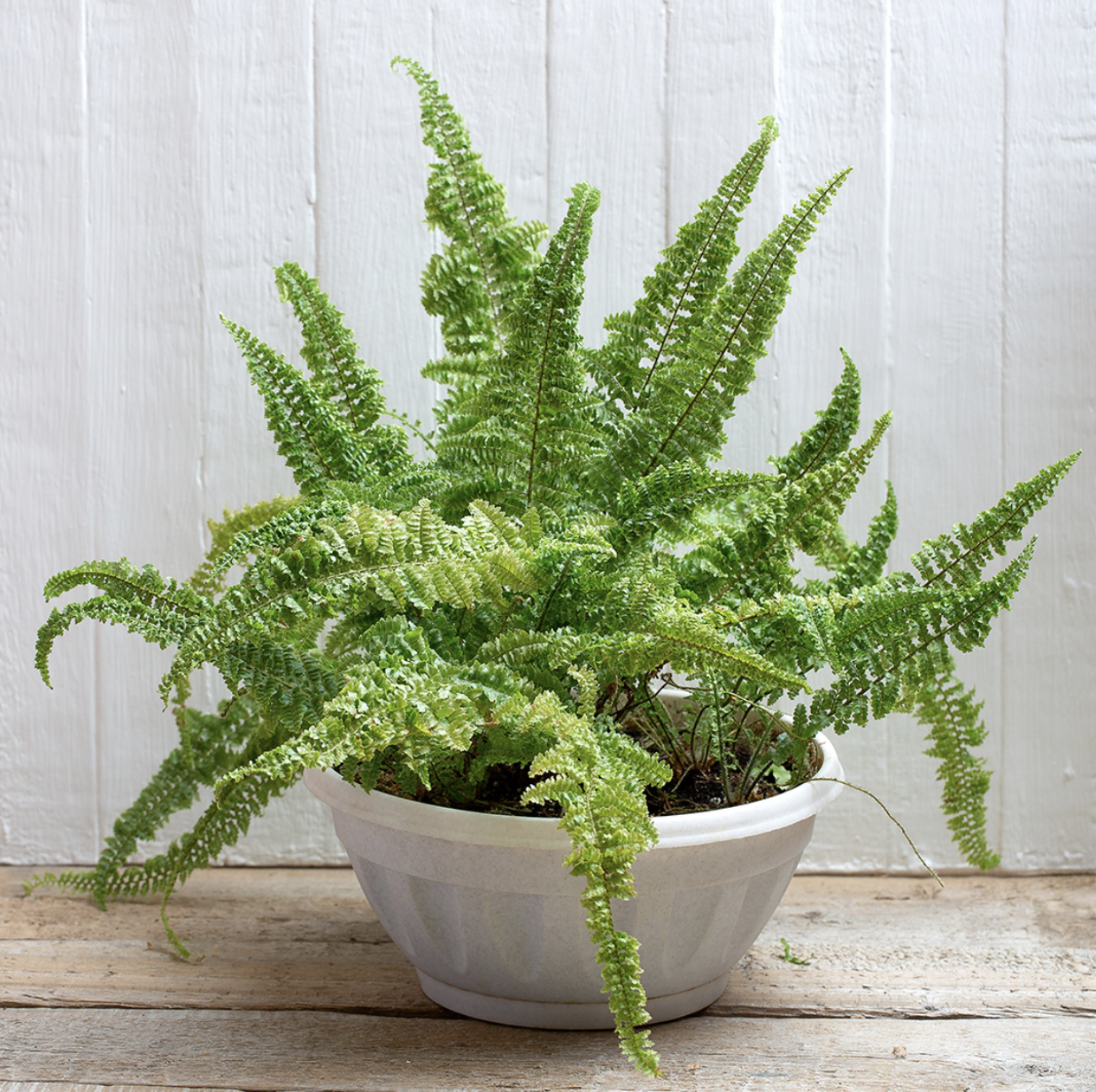
7. Boston Fern
A big, full Boston fern in a hanging pot adds dimension and texture to any corner of your home. They are often inexpensive, so you don’t have much to lose by giving them a shot. Keeping humidity and moisture consistent is the key to success with this fern. Either keep them near a humidifier or give the foliage a spritz of water every day. Its fronds can also get singed when they get too much direct sunlight so definitely avoid putting it near a south-facing window. Don’t be alarmed if your fern struggles when you move it to an area with less light—they don’t like environmental change, but will eventually adapt to the new area. You can trim off any yellow or crispy leaves, and new growth will soon replace it.
In Other NEWS






























